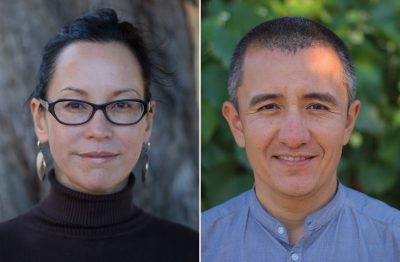 Barbara and Azamat Junisbai
Barbara and Azamat Junisbai
Claremont, Calif. (February 15, 2017)—Pitzer Professors Barbara and Azamat Junisbai’s research paper, “Two Countries, Five Years: Islam in Kazakhstan and Kyrgyzstan through the Lens of Public Opinion Surveys,” has just been published in Central Asian Affairs, a peer-reviewed journal that features innovative social science research on contemporary developments in Central Asia. The husband-and-wife research team, along with co-author Baurzhan Zhussupov, looked at the rise in religiosity and orthodoxy among Central Asian Muslims in Kazakhstan and Kyrgyzstan and the role of government between 2007 and 2012.
“No one else has the data we found,” said Azamat, associate professor of sociology, a Kazakhstan native and naturalized US citizen. “It’s a gold mine of information.”
Barbara, assistant professor of organizational studies, says their research helps fill gaps in knowledge about two comparable societies in the Muslim world. The Junisbais were funded by a $100,000 National Science Foundation grant for 2012-14 and a $40,000 grant from the National Council for Eurasian and East European Research.
“Our study sheds light on patterns of religious identification, attendance of religious services, daily prayer, belief in the afterlife and support for shari’a among members of Muslim ethnic groups in these two countries,” said Barbara, who served as Pitzer’s assistant dean of faculty from 2011 to 2014. “Importantly, our data allow us to compare changes that have taken place between 2007 and 2012.”
The Junisbais chose these particular countries in part because of the their commonalities. Characterized by similar religious and cultural traditions, languages and histories, both had nomadic populations during the pre-Soviet period and acquired independence when the Soviet Union collapsed in 1991. “They have a set of circumstances not found anywhere else,” said Barbara. “We wanted to see what differences there are now.”
Barbara points out that after the disintegration of the Soviet Union, differences emerged. Kazakhstan, with its ample natural resources, is now much more prosperous than Kyrgyzstan, one of the poorest countries in the region.
While much of the existing research on Central Asia has been qualitative or extrapolated from existing work, the Junisbais took a quantitative approach to address underexplored questions.
They wanted to shed light on everyday religious practices among ordinary Central Asians as well as the connection between Islam and local politics. They also wanted to gain a firm sense of how views and practices have evolved.
To uncover this information, the Junisbais needed high-quality data from nationally representative samples in the two countries. This required a presence in the region. “In the US, survey data is usually obtained by phone-based interviews. In Central Asia, this approach would not yield representative data. Face-to-face interviews are necessary,” Azamat said.
Azamat contracted with professional survey research companies in Kazakhstan and Kyrgyzstan. Each company maintains a network of interviewers in different regions and both are considered leaders in their respective countries. He conducted trainings for interviewers and their supervisors to ensure that the questionnaire was properly understood and sample design requirements were followed. “I also shadowed several interviewers in each country to see first-hand how data collection proceeded,” he said.
The interviewers queried people on many subjects: gender, age, level of education, household income, ethnicity, regional residency and religious practices, as well as their opinions on economic and political issues.
Quality control consisted of follow-up phone calls and visits and scrutiny of the newly created dataset for data entry errors or suspicious patterns. “It can be super nerve-wracking to make sure data is accurate,” he said. “If you’re not confident in the process, the whole thing is worthless.”
Their research confirms that a religious revival is underway, with about 95 percent of Kazakhstani and Kyrgyzstani Muslims self-identifying as such in 2012—up from 80 percent in Kazakhstan in 2007. They found greater engagement in religious practice in Kyrgyzstan and a steep rise in expressions of religious orthodoxy in Kazakhstan. Greater control over and repression of religiosity in Kazakhstan may be rerouting individuals toward more orthodox views there than in Kyrgyzstan, where there is greater freedom—or at least less governmental hindrance—to worship.
In their paper’s conclusion, the Junisbais raise questions for future research on the implications of the evolving religiosity for the political and social environments in the two societies.
Azamat is confident that with their gold mine of research data, “We can go back and look at a gazillion things. The most interesting part of research is that you don’t know what you’re going to find,” he said.